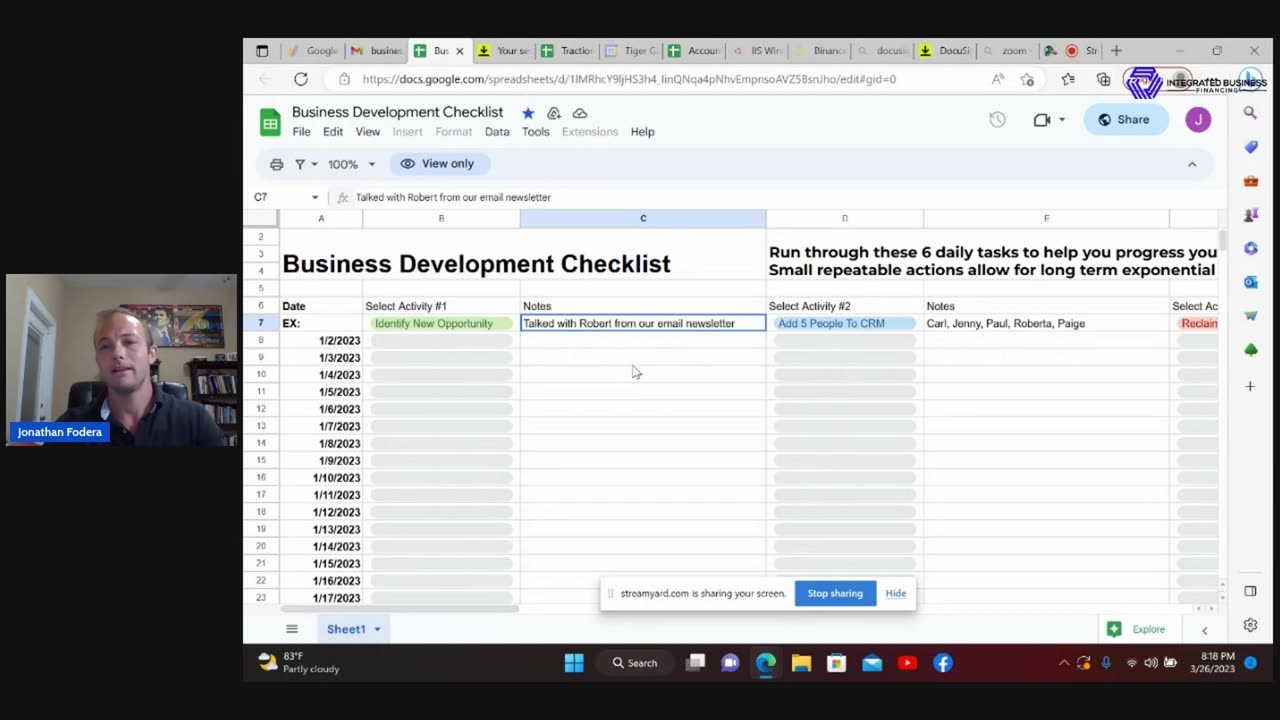Premium Only Content

Small business owner guide to using a planner
Running a small business can be an exciting and rewarding venture, but it also comes with its share of challenges. Time management and organization are critical factors in the success of any business. Luckily, small business owners today have access to a variety of tools to help them manage their time more effectively and stay on top of their tasks. In this article, we will explore how small business owners can effectively use both traditional planners and digital planners to streamline their operations, enhance productivity, and achieve their goals.
The Power of Traditional Planners
Traditional paper planners offer a tangible way for small business owners to plan, organize, and structure their day-to-day activities. Here are some tips on using them effectively:
a. Prioritize Tasks: Start your day by listing all the tasks you need to accomplish. Prioritize them based on urgency and importance. This approach will help you focus on the most critical tasks first.
b. Set Realistic Goals: Break down larger goals into smaller, manageable tasks. Assign deadlines to each task to keep yourself accountable and motivated.
c. Time Blocking: Allocate specific time blocks for different activities, such as responding to emails, client meetings, and administrative work. This technique can minimize distractions and boost productivity.
d. Review and Reflect: At the end of each day or week, take some time to review what you accomplished and identify areas for improvement. Use this reflection to make adjustments to your planning approach moving forward.
Embrace the Digital Planner Advantage
Digital planners offer the convenience of accessibility across multiple devices and provide advanced features that can supercharge small business management. Here's how to maximize their potential:
a. Sync Across Devices: Choose a digital planner that can sync seamlessly across your computer, tablet, and smartphone. This ensures you can access your schedule and tasks on-the-go.
b. Utilize Reminders and Notifications: Set up reminders and notifications for important deadlines, meetings, and milestones. These alerts will keep you on track and prevent any missed opportunities.
c. Collaborate with Your Team: If you have a team, consider using collaborative digital planning tools that allow real-time updates and task assignments. This fosters teamwork and transparency, increasing overall efficiency.
d. Integrate with Other Apps: Many digital planners integrate with other productivity apps, such as project management tools or communication platforms. Take advantage of these integrations to streamline your workflow and centralize information.
The Hybrid Approach: Combining Traditional and Digital Planners
For some small business owners, a hybrid approach using both traditional and digital planners can be highly effective. Here's how to make the most of this approach:
a. Daily Goal Setting: Start your day with your paper planner, writing down your top priorities and goals for the day. This practice helps to clarify your focus and set intentions.
b. Digital Task Management: Use a digital planner to manage task lists, set reminders, and maintain long-term schedules. Digital planners often offer more flexibility and dynamic organization for task management.
c. Weekly and Monthly Planning: Use your traditional planner for weekly and monthly planning, where you can outline broader business objectives, revenue targets, and growth strategies.
d. Regular Synchronization: Make it a habit to synchronize your traditional and digital planners regularly. Ensure that important events and deadlines align across both platforms to avoid confusion or oversights.
-
 2:54:42
2:54:42
Side Scrollers Podcast
19 hours agoEA BANNING “MAGA” Usernames? + Roblox CP Situation Gets WORSE+ CollarGate + More | Side Scrollers
43.6K40 -
 15:09
15:09
GritsGG
15 hours agoSolo Warzone Victory! Shadow Banned!
15.9K -
 LIVE
LIVE
Lofi Girl
3 years agolofi hip hop radio 📚 - beats to relax/study to
258 watching -
 12:19
12:19
BlabberingCollector
1 day agoPotter Fans In Frenzy, Keira Knightly Responds To Potter Involvement Backlash | Wizarding World News
11K -
 2:56:20
2:56:20
FreshandFit
13 hours agoThe Price Is Right! Fresh&Fit After Hours Edition
198K78 -
 6:45
6:45
The Power of Connection
2 days agoThe Power of Connection : Networking vs. Connecting
13K4 -
 28:53
28:53
Afshin Rattansi's Going Underground
3 days agoTrump Has Surrounded Himself With Neocons AGAIN, War After War is Coming! (James Carden)
23.9K20 -
 1:54:50
1:54:50
Badlands Media
13 hours agoDevolution Power Hour Ep. 398: Economic Warfare, Trump’s Strategy, and the Coming Reckoning
80.8K31 -
 2:08:19
2:08:19
Inverted World Live
11 hours agoInvasion of the Lectern Guy | Ep. 124
55.6K6 -
 2:54:29
2:54:29
TimcastIRL
10 hours agoDemocrats Declare STATE OF EMERGENCY Over ICE Raids, DHS ATTACKED, CIVIL WAR | Timcast IRL
254K152